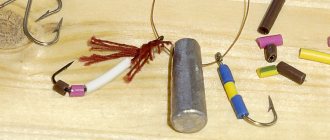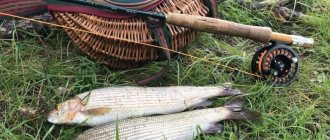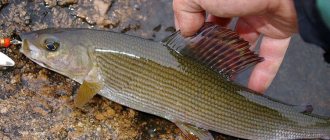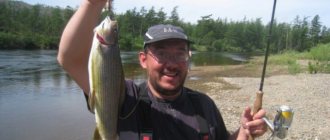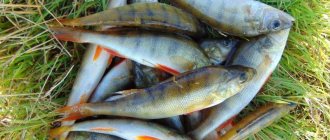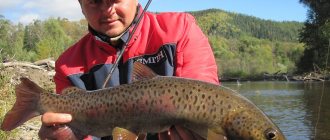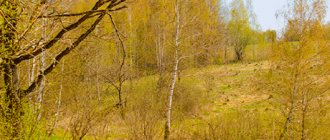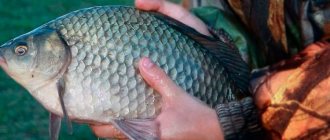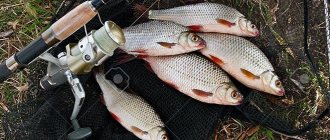Spring grayling fishing period
The question immediately arises - what do we mean by spring grayling fishing? Getting it out from under the March ice? So this is still winter fishing. Or do I catch it in April - right after the ice breaks up? Well - quite a spring fishing! Or do I fish in muddy water during a flood? By itself! Or already when the water began to clear of suspended matter, and grayling began to be taken from the surface? But this is actually summer fishing. It turns out that catching grayling in the spring means fishing for it in muddy spring water - from the moment the rivers open until the end of the flood.
However, not everything is as simple as it seems, because in the spring the fish’s instinct for procreation comes into conflict with the fisherman’s desire to satisfy his hunting instincts.
I believe (and many agree with me on this) that a real fisherman will never fish for grayling during spawning ! Only the last poacher is capable of this!!!
Is it necessary to talk about how valuable this fish is now? [1] In Bashkortostan and the Chelyabinsk region, grayling fishing is prohibited at any time of the year.? And how is it found less and less often in our rivers? It’s not just about spawning - you can’t catch it before spawning [2] You shouldn’t also forget about the spawning ban. In the Urals it is “on other water bodies” (that is, on all those ponds, lakes and rivers that are not included in the list), usually lasts from May 1 to May 30!
Photo 2. Flood on the small river - grayling spawning time.
In the Middle Urals, graylings begin to spawn closer to mid-May. I believe that it is precisely after the moment when the flood overcomes the peak mark and begins to decline. Spawning lasts two to three weeks, depending on weather conditions. But one thing is clear - in the last days of the third spring month, the bulk of the fish should already spawn. And if one of them has not yet thrown out eggs, then it is only a trifle, because the larger ones, as a rule, are rubbed first.
There is only one conclusion. April , the last days of May and the first days of June (until the water clears). This is what we will consider the time for spring grayling fishing.
Now let's move on to fishing.
Oscillating spoons
Spoon baits, as a rule, are less effective for grayling, but in relatively calm sections of the river they can also give good results. From the variety of such spinners, choose miniature silver or copper models with an oblong shape and a weight of 5-7 g. When fishing with spoons, it is advisable to use the technique of retrieving with short pauses, because grayling most often attacks the bait precisely when it is in the free fall phase .
Difficulties of spring fishing and its tactics
So, we have a difficult and interesting fishing ahead of us in troubled waters. Despite the fact that fishermen never measure water transparency with instruments, but determine it “by eye”, a clear criterion for “turbidity” still exists. Water is considered exceptionally turbid if the concentration of suspended matter in it reaches such a value that the fish, when searching for food, ceases to rely on vision due to its temporary uselessness. From the shore, this looks like an almost complete lack of bite on ordinary surface baits. The transparency of the water is noticeably less than half a meter (if a fisherman goes into the water up to his knees, he will not see the toes of his boots).
Photo 3. Muddy flood water. Author: UWRTEY.
Where to look for grayling in spring? Even during this period, he does not change his principles, trying to stay on the border of two waters - fast and quiet (you can learn about specific grayling sites in the article “Greyling fishing on small rivers”). However, the arriving flood somewhat “corrects” its behavior. Grayling moves away from the strong jet closer to the shore and gradually rises against the current - into the upper reaches and smaller tributaries. It has also been noticed that as soon as he smells clean water (in small rivers, as is known, the water brightens noticeably earlier than in large ones) - he immediately rushes there. And where it is definitely useless to look for grayling during a flood is on high-water rivers, because by the time the water in them became cloudy and flooded, it had already risen to smaller and cleaner areas. Therefore, you will have to go to the upper reaches for fish.
Photo 4. In small tributaries, the water is also not free of suspended matter, but it is noticeably cleaner and more transparent. This phenomenon is explained by the fact that the smaller the watercourse bed, and the higher it is in the mountains, the less soil will be washed out by the stream from the bottom and banks. Photo by: UWRTEY.
Based on the above, you can choose two tactics - go up the river and find a convenient place where the water is not very muddy, then sit there all day waiting for the graylings to rise, or walk along the bank, fishing for all the interesting places. Or you can “combine business with pleasure” - choose a certain area, mark several places and fish them, periodically changing them in turn.
Peculiarities of grayling behavior before and after spawning
Grayling is considered a fairly cautious fish. It has good vision compared to many other fish species, a sensitive lateral line, as well as hearing and smell. Experienced fishermen have come to the conclusion that it can be scared not only by the shadow of the fisherman himself, but even by the shadow of the fishing rod.
After the reservoirs are freed from ice, grayling begins to move to the upper reaches of the rivers - this fish does not like the muddy spring waters of a large river, but in smaller tributaries the water remains cleaner. And grayling spawning occurs mainly in rocky and shallow areas. For the most effective fishing, a good time would be the beginning of the movement of fish to the upper reaches, as well as the period after spawning, since, after spawning, grayling remains close to the spawning grounds (usually somewhat downstream), and return to deep wintering holes in late autumn. Spawning begins when the water temperature in the river reaches 5-10 degrees, which is individual for each reservoir, but on average this occurs in mid-May.
Gear used
In principle, you can fish for spring grayling using any gear used for open water fishing (theoretically, even fly fishing), but muddy water significantly limits their range. In such conditions, grayling searches for food by smell, or by lateral line. Therefore, we have only two ways: either catch it with natural baits - a bottom or float rod, or with artificial ones that produce vibrations in the water. And this is a fishing rod with a side nod and a spinning rod.
Float rod
A separate article is devoted to float fishing for grayling on our website. Everything that is said in it for summer is also true for spring fishing. Therefore, I will consider this method of grayling fishing only briefly (those interested in details can go to the above link).
In muddy water, the “smell” of the bait is of primary importance. Apparently this is related to the fact that in the spring fish respond very well to dung worms and bloodworms. Or - on a common caddisfly.
Bottom tackle
In addition to float gear, you can use a full-fledged donka, but it will be in demand only if it is known that there are large fish in the river. Then it even makes sense to put a few tricks with a worm. And in some rivers, live bait, for example, a small minnow, can act as bait.
If there are no large grayling, it is easier to move the float to the tip of the rod and fish with the so-called “half-bottom”, which is characterized by increased mobility and good catchability.
One day, the author of these lines, fishing a small river located in the Ural wilderness, found himself in a rather shallow and stormy area, where fishing with a fishing rod with a long goose float became very difficult due to the shallow depth and fast current. If below - in the whirlpools - this tackle worked flawlessly, here it began to cling to the bottom when retrieving. But the float was moved right under the tulip, and the fishing method changed to bottom fishing - more promising for shivera. After this, five good grayling replenished the basket within an hour.
A donkey made from a hastily converted spinning rod is also possible. Here the tackle will be equipped with a friction clutch, which, if something happens, will help bring out a large trophy.
Side nod
But a fishing rod with a side nod, equipped with a jig, can prove to be many times more catchy than a float or donka, because it attracts fish not only with the smell of the bait, but also with vibrations, which is a decisive factor in muddy water. It may even turn out that the nod will catch the floater on the same river with the same baits.
The gear is quite simple: a regular fishing rod (but preferably light and balanced). The side nod is made of lavsan, or, at worst, from a plastic bottle. A medium-sized jig is used as bait. Converting an ordinary float fishing rod to a nod is a matter of one evening.
There is a known case when in 2003 one guy caught grayling in the last days of May on the Bolshaya Sibirka River with summer jig tackle. The result was 17 decent fish, including specimens weighing half a kilo. Apparently, it was a spawned vanguard that had not yet rolled into Chusovaya, in which at that moment the water was high, stormy and the color of cocoa with milk. In the tributary, the turbidity had settled by half, and the water there turned out to be clearly cleaner, although it had not completely cleared up.
Another good thing about a nodding fishing rod is that the bait can be placed in a difficult place, for example, in a snag, or under tree branches and roots. And in general - right under the fish’s nose. With an ordinary float or donka, even if such a trick works, it will only be with a sniper-millimeterist, and even then, it is not a fact that the spotted grayling will not later confuse the equipment.
Spinning
A separate topic is catching grayling in the spring with light and ultralight spinning rods. The baits usually used are small spinner spinners (0 or 00), less often - small sinking wobblers. You should also not forget about such a newfangled style of spinning fishing as jig fishing. The only thing is that you need to throw bait taking into account the fact that the bottom (and therefore the snags) is not visible, and at this time you can plant your favorite spinner on the very first cast.
Nevertheless, grayling will definitely respond to a bait that produces good vibrations. Tested many times.
Bombard, fly fishing, boat
Still, I will also mention surface tackle. Sometimes the water is not cloudy enough to rule them out completely. In addition, there are some tricks that allow you to increase the visibility radius of the bait even in conditions of outright turbidity.
In clear water, such a thing might scare away the fish, but now it doesn’t. Fishermen practice the following: they use larger baits, as well as those whose coloring is defiantly bright, and even better, fluorescent (that is, glowing in ultraviolet light). To ensure this coloring, appropriate material is used when tying flies, or they are decorated with a special cambric.
Instead of an afterword
Sometimes at first glance it may seem that catching grayling in muddy water in the spring is a futile task. Among the people, even a persistent misconception has formed about this. I know fishermen who don’t get involved with this matter on principle, but wait for the water to clear up. However, practice shows the opposite. With the proper patience and ingenuity, grayling can be easily caught in spring water.
Notes[]
Notes
| ↑1 | In Bashkortostan and the Chelyabinsk region, grayling fishing is prohibited at any time of the year. |
| ↑2 | Don't forget about the spawning ban. In the Urals, it “on other water bodies” (that is, on all those ponds, lakes and rivers that are not included in the list), usually lasts from May 1 to May 30. |
Where to look for this fish?
Catching grayling in the spring requires that the angler is well acquainted with the habits of this particular fish. You can catch pike, perch, pike perch or other predator well, but difficulties may arise with grayling. This fish primarily prefers a rocky bottom, somewhat less often a sandy bottom. Almost never found in grassy areas. The search for this fish is especially promising near rifts and rapids on rivers, and in rocky shallow areas of lakes.
Photo 1. In places where rivers narrow, promising rapids appear.
There is also an interesting pattern - the higher up the river you fish, the larger the grayling you catch. Which, however, is quite simply explained. When climbing up the riverbed, against the current (often quite strong), the fish has to expend a lot of energy, and the small grayling is simply unable to go against the current for a long time.

